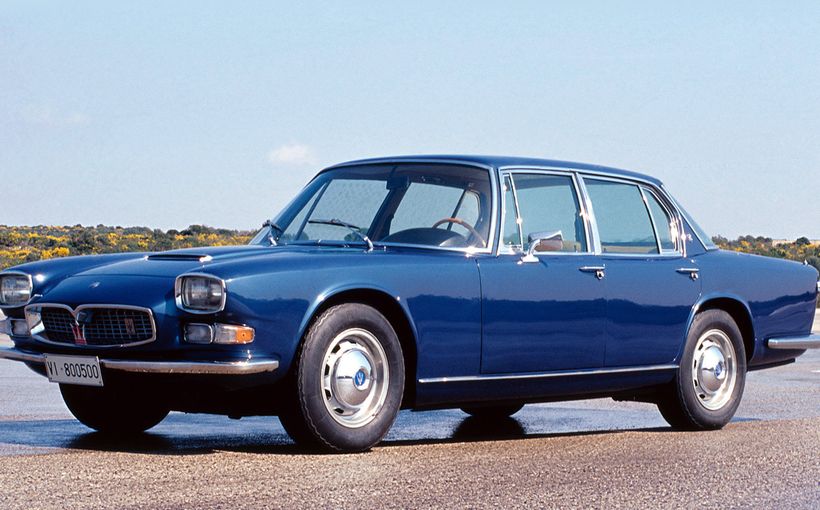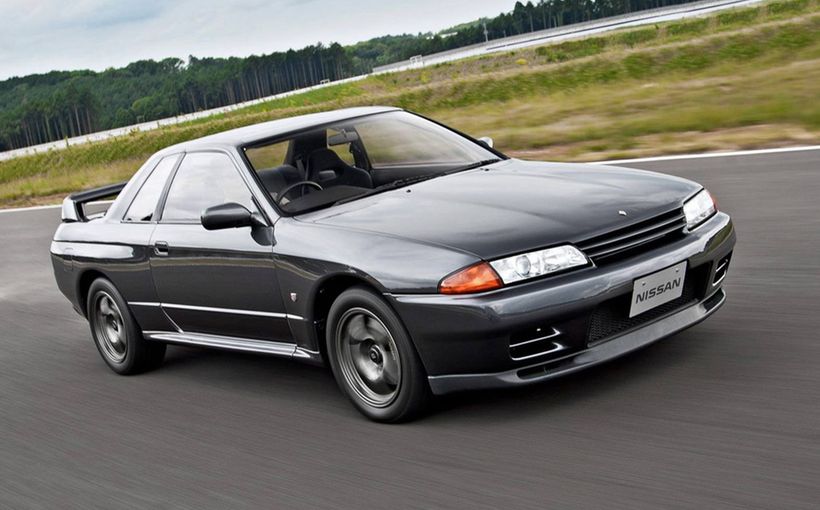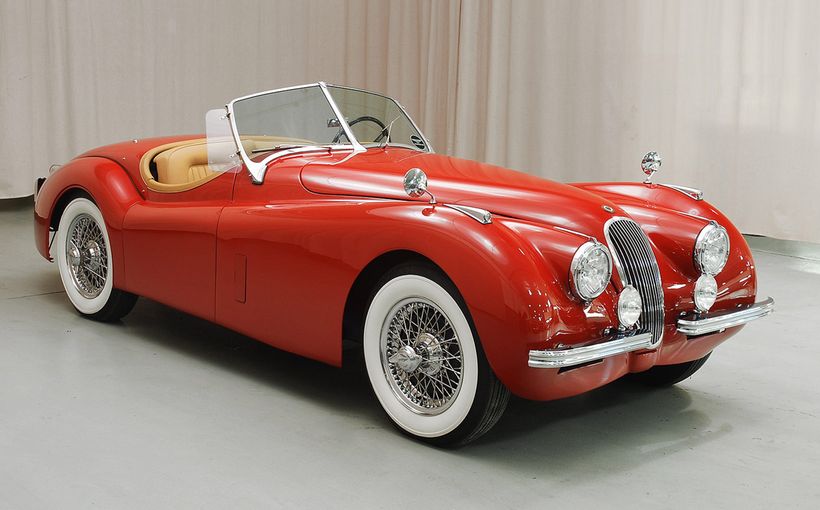Renault Dauphine: heir to the French small car crown

Renault’s first post war model, the 4CV, was sold from 1946 to 1961 and more than 1.1 million were produced. Its design was greatly influenced by Ferdinand Porsche’s Volkswagen and, indeed, Porsche was invited by the French Government to review the baby Renault before it was released for sale.
That was in December 1945. The war was over but Renault boss Pierre Lefaucheux had been taken prisoner of war by the Gestapo in June 1944 and taken to Buchenwald. No way was he going to be influenced by any opinion of Dr Porsche’s. So, once the nine meetings insisted on by the politicians had been held, Lefaucheux worked behind the scenes to get Porsche imprisoned in Dijon. The crime was the use of forced labour, including in the Volkswagen factory.

It was Lefaucheux’s predecessor Louis Renault who had instigated the small car program and he was an admirer of the Volkswagen, which probably explains the 4CV’s rear-engine configuration. But it’s important to realise that some other manufacturers were choosing to put the engine behind the passengers and this was set to become the trend in Germany until well into the swinging 60s.
Renault’s engine was neither air-cooled or horizontally opposed in configuration.
The progress of Europe from postwar austerity to increasing prosperity is probably nowhere better incarnated in the automotive world than the 1955 Citroen Diesse, undoubted star of the Paris Salon. But it’s fair to suggest that the transition from the frumpy little 4CV to the elegant and comparatively sophisticated Dauphine also reflects the emergence of France into a more optimistic time.
While the 4CV – sold in some markets including Australia as the ‘750’ – had its charm, the design was essentially minimalist and functional. But the Dauphine was nothing less than a compact beauty and it was hardly surprising that the gorgeous Floride sports cars were later developed from it.

Despite using essentially 4CV mechanicals, the Dauphine was engineered to deliver much better handling and a significant increase in performance.
Rather than mainly providing mobility to the French, the Dauphine was always intended to put the Renault brand on the world stage. As if to italicise this point, Renault pioneered the current practice of launching a new car by inviting prominent members of the motoring media to an international function. Perhaps executives’ confidence in the product had been suitably bolstered by the more than 2,000,000 kilometres covered by prototypes.
The Dauphine made its debut at the Geneva Salon on 8 March 1956 and by the end of that month the first Dauphines were embarked on the high seas for the United States, where it was an overnight success. But the task of getting American consumers to pronounce the brand correctly was a step too far and television advertisements called the Dauphine a Ren-olt.
Unlike the Diesse, perhaps the Dauphine was not exactly futuristic, but it was certainly right up to date. Small car peers included the Beetle, the Fiat (103) 1100, Alec Issigonis’s Morris Minor, the Austin A30 (which looked like a shrunken midsize car) and the Ford Prefect, as well as its Citroen 2CV compatriot.
It was lower than the 4CV and 13 inches longer. Larger cylinder bores took capacity from three-quarters of a litre to 845cc. The engine developed 30 brake horsepower and the Dauphine could nudge 70 miles per hour.

Like the Volkswagen, the Dauphine would be exported to the US in significant numbers but, unlike the German machine, its reputation would be lastingly damaged for American consumers by the end of 1960.
Where the Dauphine was quite capable of racking up annual mileages of 5000 or so in European conditions, it failed to stand up to 15,000 or more in the US, many of them undertaken at high speeds. Like a number of small cars, including some already mentioned, it did not boast especially rugged engineering and had not been designed to cruise all day at 65 or even 70 miles per hour, which is what typical American customers – already growing accustomed to V8 engines – expected.
The Dauphine’s used value plummeted. Concessionaires and dealers began cancelling orders. Thousands of cars lay in open air parking lots, unprotected from the elements. (One problem was that earlier sales had been so easy that distributors had never bothered to learn how to protect the little cars on their journey from France to a dealership in the United States and thence in short order to a proud new owner.) It must have seemed like the proverbial blessing in disguise when a hurricane sank 2000 Dauphines at Houston invoking a large insurance claim!

Fortunately, none of this applied in Australia. The Dauphine made its local debut in November 1956. In January 1959, its price was £938, a neat four quid more than the Minor 1000, and when an FC Holden Special was king of the automotive jungle and cost £1173.
Sturt Griffiths, writing in the Sydney Morning Herald, said:
The Dauphine is very good on bends and corners. It enters the curves very willingly and it shows good road adhesion. This eagerness to get around the bends is the result of a moderate over-steering tendency, which the keen driver will appreciate, and which will not bother the novice if reasonable care is exercised in the wet. There is little body roll on fast corners, and the tyres are commendably quiet.
The car sits down on the road particularly well, and the rougher the going the more the Dauphine shows to advantage. I was impressed by the way this light car handles badly potholed country roads. The all-independent suspension works hard, but the car rides calmly on an even keel, and pitch and bottoming are absent. The back seat is as comfortable as the front compartment.
As a car-crazed young boy, I sensed a status order among the little cars that were beginning to facilitate the two-car family. No question, the Dauphine ranked higher than our Austin A30, a Standard Cadet or Ford Prefect. It seemed almost as desirable as the more powerful Fiat 1100.

What I didn’t know until researching this story was that the Dauphine made do with a three-speed gearbox, with no synchromesh on first. But there was a special Ferlec clutch version, which was essentially the same thing but lacking a clutch pedal. I wonder how many found homes here because it was expensive at £1031.
And what did Renault do to solve its US crisis? The new car price was immediately dropped from $1595 to $1395 and not one of the rotting vehicles in stock was returned to France. Instead they were completely refurbished and sold as ‘new’ used cars. Doubtless, this unfortunate experience at least made Renault suits more aware of their baby’s penchant for rusting. Add the fragility of the car’s frontal section in a crash and it is easy to see why comparatively few Dauphines remained in service for more than eight to 10 years!

The solution to all those unsold Dauphines and the model’s deteriorating reputation came too late. Vincent Grob, in charge of this immense program, wrote later: ‘We have cleaned up the abscess, but the whole market has been poisoned.’
No more standard Dauphines were imported into the US but the luxury Ondine variant (never sold in Australia) and the rapid Gordini were available, both of which had a four-speed gearbox.
At the 1958 Paris Salon, Renault showed its Floride in three guises – 2 + 2 coupe, 2 + 2 cabriolet and convertible. It used the Dauphine’s 845cc engine re-tuned to make 37 brake horsepower. Oddly, the standard gearbox remained a three-speeder without synchromesh on first, but buyers of the (heavier) coupe could pay extra for a four-speed unit and most did.
A Gordini version was available in some countries (not including Australia) with 45 horsepower.
And the name? At a convention of Renault’s US dealers in Florida, the company was asked to create a coupe/cabriolet which would help Renault’s image. Exports began a year after the Paris introduction but the little sports car was sold in the US as the Caravelle, allegedly so as not to offend buyers from states other than Florida!
The Floride was styled in Italy by Frua. It was imported into Australia and cost almost twice as much as the Dauphine. The May 1962 edition of Wheels lists the Dauphine at £850 and the Floride from £1495 to £1570.

The Dauphine Gordini arrived in Australia in June 1960 and was unique among small cars. Fiat had sold a tiny number of its 1100 TV variants (‘Twin Venturi’) in the late 1950s, but few customers in that decade even imagined a hot edition of a small sedan.
The Gordini was the brainchild of Amedeo Gordini, who had mooted the idea of a high performance version in 1956. It went into production the following year. Unlike later Renault Gordinis, the Dauphine was offered in a wide range of colours (and I can’t remember whether French Blue was among them) and was the absolute wolf in sheep’s clothing with 40 brake horsepower like a 1961 Beetle but in a much lighter car. It could accelerate to 60 miles per hour in just 20 seconds and achieve a maximum of 80.

Context? In 1960, the Fiat 1100 - considered fast for a small car - took almost 25 seconds and was flat-chat at 76.
In summary, the Renault Dauphine is best thought of as a 4CV with a pretty body and uprated dynamics. Its spirit would live on in the R8 and R10 (sold here as the Ten) and perhaps the greatest tribute to the Dauphine was the victory of the Renault R8 in the inaugural Wheels Car of the Year Award for 1963. As for the Dauphine Gordini, wouldn’t you just love to have one of those in your collection?












